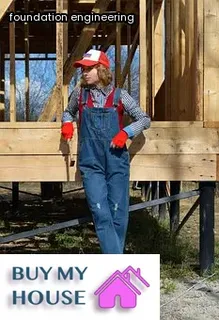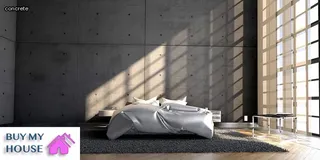When buying or selling an older home, it is important to identify any potential foundation problems. Common signs of foundation issues in older homes include cracked walls and ceilings, uneven floors, and doors and windows that won’t close properly.
These problems can be caused by a number of different factors such as soil settlement, weather conditions, plumbing leaks, poor construction techniques, and tree roots growing around the foundation. In severe cases, the foundation may need to be replaced.
Some solutions for repairing old house foundations include adding additional support with steel beams or helical piles, replacing damaged wood framing members with new ones, sealing cracks in walls or floors with cement-based masonry mortar or epoxy injection systems, and addressing drainage problems around the foundation to prevent further damage. Identifying the cause of a foundation issue is key to finding a suitable solution that will provide long-term stability for an older home.

Old house foundations are subject to many common issues that can cause a variety of problems over time. Diagnosing these foundation issues is the first step in finding a solution and restoring the structure of your home.
Signs of foundation trouble include cracks in walls, uneven floors, doors and windows that won't close properly, sagging floors, and bowing or leaning walls. To determine the true cause of these symptoms, a professional should be consulted.
Depending on the age of the house, typical sources of damage may include water and moisture causing weakening in soil beneath the foundation, settling due to inadequate footings or lack of support from soil underneath, decay from wood rot or insect infestation, or shifting due to seismic activity or changes in soil composition overtime. Once the source is identified, solutions can range from simple repair techniques such as patching up cracks with concrete sealant to more involved fixes like underpinning with concrete piers or steel support beams.
It is important to take action quickly when dealing with old house foundations; early intervention can prevent further structural damage and save costly repairs down the road.
The soil on which a house is built has an immense influence on the construction of its foundation. Poor soil can cause major problems in foundations, from shifting and settling to possible collapse.
Many building codes have requirements for soil composition to ensure that a house's foundation isn't at risk. Clay soils, for instance, are known to expand and contract with changes in moisture, which can lead to cracking and other issues in the building's foundation.
Sandy soils are more stable but may not provide enough support for the weight of a structure. In either case, proper compaction and drainage must be used so that the soil can bear the weight of the house without shifting or settling over time.
Knowing how different soils will react to conditions is essential when building an old house foundation - if there are any doubts about the quality of the soil, it might be best to consult with a professional before continuing with construction.

When examining old house foundations, there are several different types of foundation structures to consider. A poured concrete foundation is one of the most common types used in both residential and commercial buildings.
Concrete block and brick foundations are also popular for older homes, although they require regular maintenance to remain structurally sound. Another option for an older home is a timber or wooden post foundation.
This type of structure requires periodic replacement of any rotted or deteriorated timbers, as well as regular inspection for insect damage. Stone foundations are sometimes found in very old homes and can be difficult to repair due to their heavy weight and the complexity of matching stones from other sources.
Lastly, pier and beam foundations are another type of structure commonly found in older homes, which use support beams set into concrete piers sunk into the ground. These structures must be inspected regularly for signs of movement or settling in order to catch any potential problems before they become too serious.
Concrete slab foundations are a popular choice for homeowners looking to construct a house with a solid foundation. This type of foundation is created by pouring concrete over an area and then allowing it to harden, creating a flat, level surface that is durable and resistant to moisture.
While concrete slabs are generally very reliable, there can still be issues that arise with these foundations due to shifting soil or water damage. Cracks in the concrete, uneven settling, and pooling of water around the perimeter of the house can all be common problems associated with this type of foundation.
Fortunately, there are solutions available which include sealing cracks, replacing weakened sections of concrete, and installing drainage systems around the perimeter to redirect water away from the foundation. With proper care and maintenance, concrete slab foundations can provide a sturdy base for any home for years to come.

Analyzing crawlspace foundations and their components requires an understanding of the different types of issues that can arise. Crawlspace foundations are typically built on a shallow foundation, meaning that they are constructed with limited foundation depth.
This can lead to structural issues, particularly when the soil is not well-compacted or has expansive clay content. Crawlspace foundations may also be subject to water damage due to inadequate drainage or excessive moisture in the surrounding environment.
In addition, they can suffer from pest infestations due to poor ventilation and inadequate insulation. Finally, crawlspace foundations may be vulnerable to seismic activity if they are not properly braced and reinforced.
These common problems should be taken into consideration when assessing the condition of an old house's foundation and designing solutions for any potential issues.
Investigating Common Foundation Problems in Homes is an important part of maintaining the safety and structural integrity of any home. Old house foundations often have a variety of issues from settling to cracking that can cause significant problems down the line if not addressed.
Knowing what to look for, understanding why these issues come up, and having a plan for fixing them are essential for anyone with an old house foundation. Common problems include soil movement, water damage, and improper installation.
Soil movement can lead to uneven settling and cracking walls or flooring, while water damage can cause rot or corrosion of wooden support beams. Improper installation is often seen when a foundation is installed incorrectly or without proper reinforcement materials like steel or concrete blocks.
Fortunately, there are solutions available for each type of problem that range from simple repairs to full replacements of the foundation. Seeking out professional advice before starting any project is always recommended as it will help ensure the safety and stability of your home's foundation in the long run.

When it comes to recognizing signs of foundation damage in older houses, it is important to be aware of the most common indicators. These can include uneven floors, cracked walls, gaps between walls and floors, doors that no longer close properly, cracks in the chimney, windows that are difficult to open or shut, and water pooling around the base of your house.
All of these signs could indicate a problem with your foundation. In addition to visual cues, you may also notice strange sounds coming from within the walls or attic.
If you hear creaking or cracking noises when you walk around your home or when there is heavy rain outside this could be an indication that something is wrong with the foundation. It is always important to take any potential warning signs seriously as they could be indicative of more serious structural issues.
Assessing potential causes of foundation problems is a critical part of determining the best course of action for an old house. As homes age, their foundations can become compromised, leading to structural issues and other problems.
Common reasons for foundation issues in older houses include settling due to soil erosion or construction defects, as well as water damage from plumbing leaks or flooding. Foundation cracks can also be caused by poor drainage or changes in the ground underneath the home.
It's important to inspect the entire foundation and identify any sources of water infiltration or potential structural vulnerabilities to determine the root cause before proceeding with a repair solution. Additionally, understanding the local climate and weather patterns can help inform decisions about how to waterproof and protect an old house’s foundation from further damage.
By assessing all potential causes before taking action on repairs, homeowners can ensure they are taking appropriate measures to restore their home’s foundation and prevent future problems.

When deciding what to do about an old house's foundation issues, it is important to understand the common problems and solutions. One of the most common problems with old house foundations is a lack of proper drainage, which can lead to water damage, buckling floors, and even major structural instability.
In order to fix this problem, it is necessary to install proper drainage systems around the foundation of the home. Another common issue is poor soil compaction, which results in settling or shifting of the foundation.
To address this issue, it is important to use soil that has been properly compacted before laying down new foundations or making repairs. Finally, weak framing or support beams can also be an issue with older house foundations.
This can be solved by adding additional supports, such as steel beams or additional concrete columns underneath the existing structure. Fixing these issues will help ensure that your old house's foundation remains strong and stable for years to come.
Yes, most older homes do have foundation problems. As a house ages and weathers the elements, it can cause a variety of issues with the foundation or support structure.
These problems can range from small cracks in the slab to major structural damage. In order to prevent further damage and costly repairs, it is important to understand the common problems that may occur with older house foundations and the best solutions available.
Some of the most common issues include water infiltration, settling of soils around the foundation, corrosion of metal supports and cracking in concrete slabs. Solutions for these problems vary depending on their severity but typically involve repairing existing cracks with epoxy injections, installing waterproofing systems to prevent water infiltration, realigning out-of-level foundations by jacking them up or using helical piers, replacing corroded metal supports and reinforcing concrete foundations with steel beams or carbon fiber straps.
Taking care of old house foundations can be a daunting task but there are many solutions available that can help protect your home from further damage.

Fixing the foundation of an old house can be a difficult and expensive task, but it is essential to ensure the structural integrity of your home. The most common problems with old house foundations include cracking, shifting, and water damage.
To fix these issues, homeowners should first assess the severity of the damage and then take appropriate steps to repair or replace damaged portions of the foundation. Cracking can be addressed by injecting epoxy into cracks to seal them off from further damage.
Shifting foundations can be stabilized by installing steel piers that extend from the foundation down to a stable stratum below. Water damage should be addressed immediately as it can cause long-term deterioration if left untreated.
Solutions for this issue could include waterproofing the exterior walls or installing a sump pump system around the perimeter of the foundation to redirect water away from your home. Taking these steps will help ensure your old house foundation is safe and secure for years to come.
Living in a house with foundation problems can be a risky endeavor, as the foundation serves as the base for the entire structure. While it's not always possible to tell if a house has foundation problems without a professional inspection, some common warning signs include cracks in walls, floors that are uneven or slanted, and doors and windows that won't open or close properly.
If you suspect your house may have foundation issues, it's important to take action quickly in order to protect yourself and your family from potential dangers. Solutions to common old house foundation problems range from simple repairs such as filling minor cracks or leveling floors to more complex engineering solutions like underpinning or replacing the entire foundation.
Proactive maintenance is also key to preventing major damage down the road. Luckily, there are experienced professionals who specialize in dealing with old house foundations who can offer advice and assistance when needed.